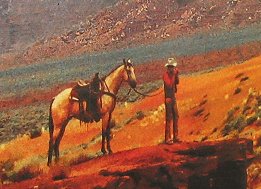I heard of the IBM Semantics Toolkit and had to d/l it to give it a try.
http://www.alphaworks.ibm.com/tech/semanticstk
Roughly, it consists of three parts (see above site):
- Orient – Visual editor
- EODM – like Jena, but less
- RStar – storage like kowari or Sesame
I focused on Orient, as it is Eclipse based and a visual editor. The other two may be interesting, but –
1. I am Jena based
2. they are not open source
3. RStar is only IBM databases (needs either IBM DB2 or IBM CloudScape which I don’t have and are too lazy to install. Cloudscape seems to be an embedded database, whatever, I stick to Orient first)
Orient
Installation is easy, read their readme.txt and unzip a few files. One mistake I made was to add Orient to my existing Java Development Eclipse – that does not work. You need the Eclipse platform, 3.0.
Then I changed to the Window-Open Perspective-Other-Orient. Voila. easy. Good looking. Reminds me of Protege. only neater. Nice typos “Please select a Konwledge I/O”. First try: new project. A lot of stunning options comes up, I keep pressing “next”. Ah, next experiment – import FOAF. Like Danny Ayers’ FOAF driven Development. WORKS. I see foaf:Person and other stuff.
Then i tried some editing. Disturbing things happen: when I create a new resource, to add its rdf:type and therefore class, I have to enter the URI of the class. At least I can select the namespace, but the existing classes are not listed. Drag-Drop doesn’t work either. Can this be true… lets see. Yes, this is low tech. I am not able to even add properties to this resource, or maybe I have to try harder. Ok, it is not a resource editor, it is an ontology editor. On the ontology side, it is better. I can add properties to classes – again by entering the URI of the property by hand.
Undo does not work also. Not always.
And then the obvious RDFS limit. The thing I often do is have one property with two classes as domain. I do this and add “foaf:depicts” as a property to “foaf:Project” (ok, not very wise). boom – it has two rdfs:domain entries, which has some disadvantages (the property is only valid for resources that are of type of both classes). This is only expressable in OWL, so RDFS crashes here anyway, so maybe this is a desired behaviour.
Export to RDF is good. The ontology comes out as clean, nice RDFS.
my bit: cool looking UI, eclipse rules. Good stable IBM ground, the EODM framework looks like it can handle this. Very easy to install, no exceptions, everything works – end user compatible. But no features, we have to wait and see until they implemented all of Protege 🙂
